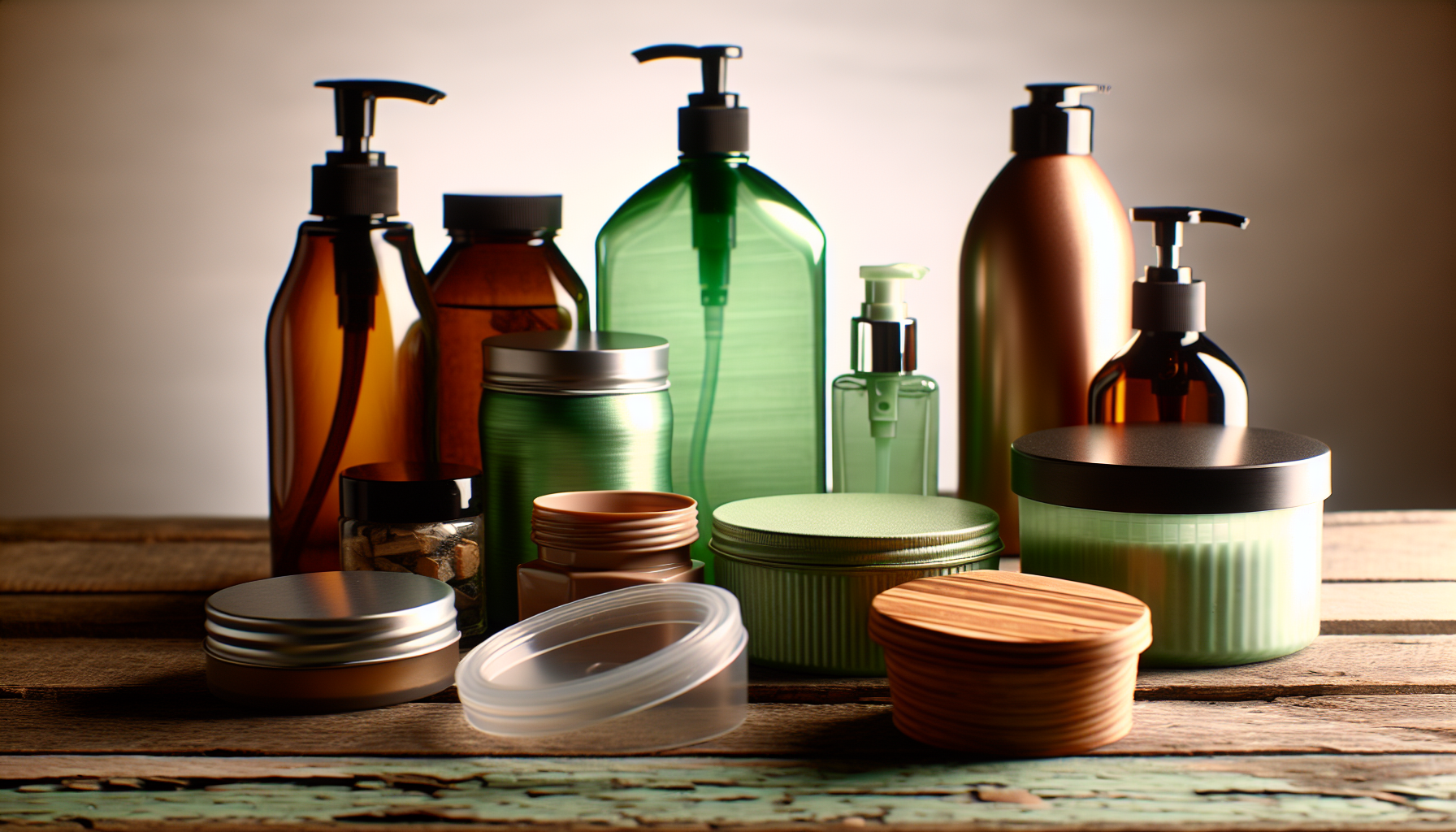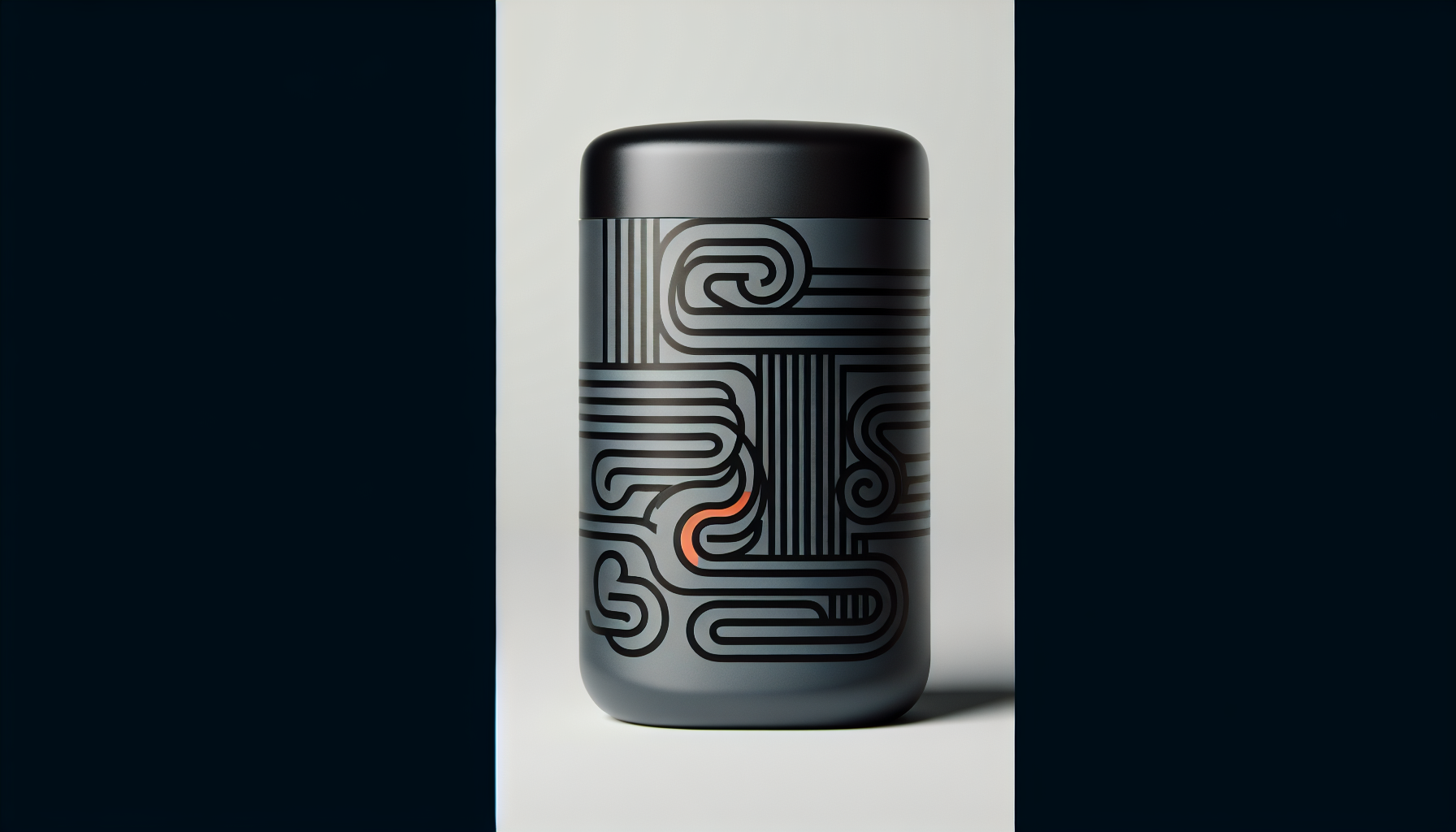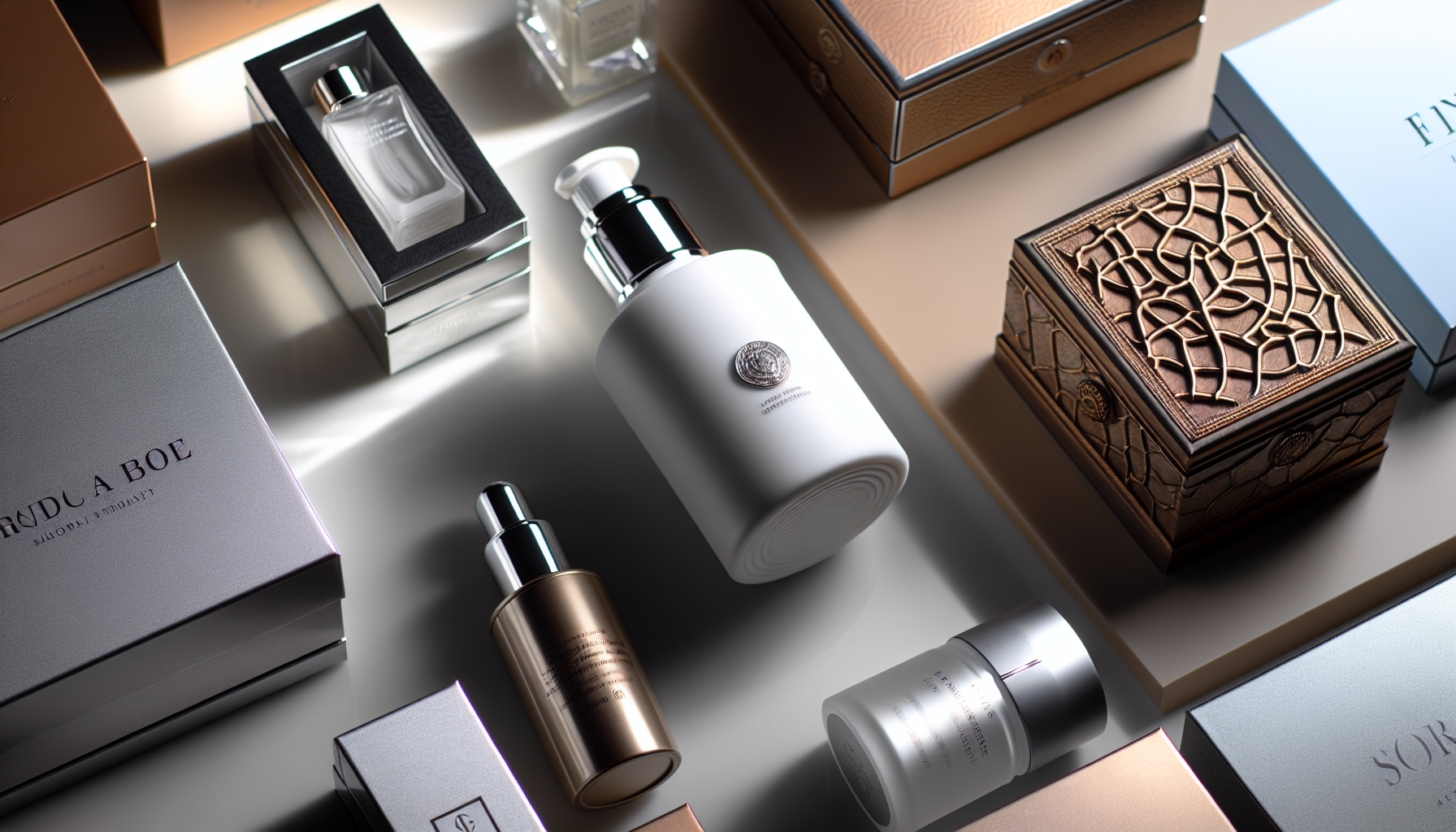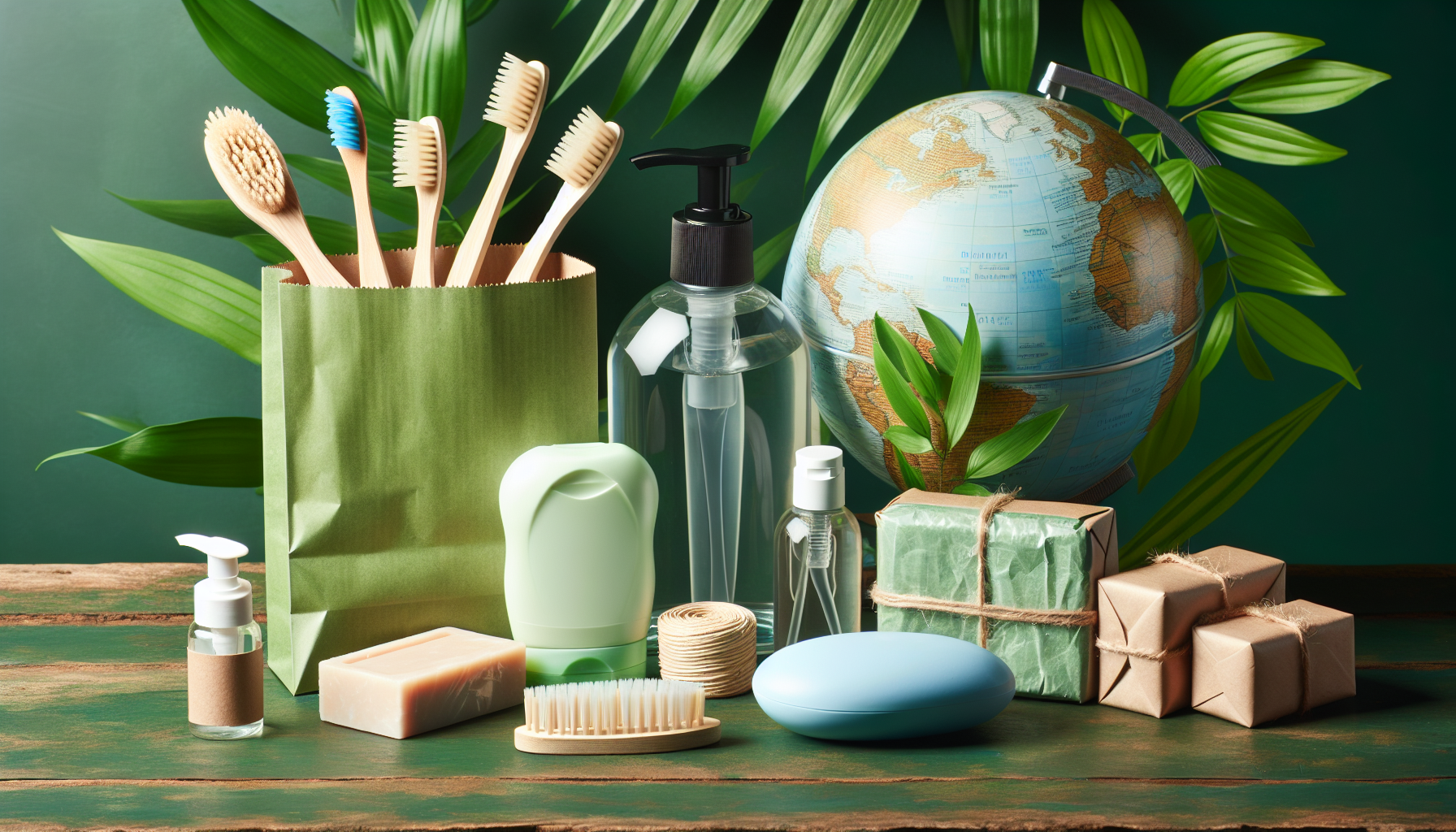Consumers demand more from personal care product packaging than ever before: sustainability, convenience, and an extension of brand identity.
This article examines how innovative packaging solutions meet these expectations, with a specific focus on sustainable materials, smart packaging technologies, and captivating design strategies.
Learn how cutting-edge trends are redefining packaging in personal care, offering brands a chance to carve out a robust market presence and engage meaningfully with eco-conscious consumers.
Key Takeaways
The personal care industry is embracing sustainable materials, smart packaging, and eye-catching designs in response to consumer demands for environmentally friendly and convenient products, with a focus on enhancing brand identity.
Customized packaging solutions, including luxury and flexible packaging, as well as advanced filling equipment, are becoming popular as they increase product appeal, reduce waste, and contribute to environmental sustainability.
Sustainability in personal care packaging is a critical focus, with brands aiming to minimize environmental impact, improve supply chain efficiency, and educate consumers on eco-friendly practices, while ensuring product safety through barrier protection and regulatory compliance.
Trends in Personal Care Packaging

In the realm of personal care, brands are evolving quickly to align with consumer inclinations for both sustainability and convenience.
To this end, innovative packaging solutions are being embraced by these brands. These measures serve dual purposes: they resonate with consumers’ desires while simultaneously addressing ecological concerns.
An example can be seen in the facial cleansing wipe market, which is leveraging user-friendly packaging options that provide ease and practicality in alignment with customer demands.
Today’s packaging solutions encompass elements beyond mere utility.
They integrate aspects like environmental friendliness, advanced technology, and aesthetic appeal.
Brands now recognize that inventive packaging extends well beyond simple product protection—it becomes a powerful medium through which brand values can be communicated compellingly to capture consumers’ attention and differentiate offerings within an intensely competitive marketplace.
Sustainable Materials
The personal care packaging sector has placed sustainable materials at the heart of its operations, with a clear move towards environmentally responsible materials and customizable options demonstrating the industry’s dedication to sustainability.
Kenra Professional is an exemplar within this space, having chosen 100% recycled ocean-bound plastic for their Sugar Beach collection’s packaging, thereby aligning their brand strongly with green principles.
Beyond using recycled plastics, there’s an uptick in interest for refillable packages made from glass and aluminum.
Paperboard is emerging as a prominent choice in skincare package production due to its light weightiness along with recyclable and biodegradable properties.
It’s Bolstered by credentials such as those from the Forest Stewardship Council (FSC), which verify that these materials are procured through sustainable methods.
Smart Packaging
Smart packaging technology has ushered in a transformative era for the personal care sector.
This innovation not only bolsters product quality and safety, it also elevates brand recognition.
For example, QR codes on packaging afford customers detailed information about the product and guidance on usage, thereby heightening their engagement with the brand.
Incorporating micro-electromechanical systems (MEMS) into smart packaging is altering how consumers interact with personal care products.
MEMS monitor both dosage and frequency of use, assisting users to adhere to their personal care routines more effectively while improving their experience with these products.
Eye-catching Designs

While the utility and eco-friendliness of products are crucial, an eye-catching design frequently serves as a key decision-maker for consumers.
Presently, minimalist designs hold popularity due to their ability to attract customers with an uncluttered and contemporary look.
Meanwhile, personal care items that incorporate vivid hues and prominent typography draw consumer attention by making a strong visual statement on store shelves.
Personal care manufacturers differentiate themselves in the competitive marketplace through inventive design features like clear packaging materials, holographic effects, and atypical sealing mechanisms.
Partnerships with artists leading to limited edition packaging infuse an element of rarity into the product line-up—heightening appeal among collectors who prize unique offerings.
Customized Packaging Solutions for Personal Care Products
In the dynamic realm of personal care, our comprehensive service team provides personalized packaging solutions that are increasingly sought after.
These bespoke offerings cover a range of needs from high-end luxury packaging to versatile flexible options and cutting-edge filling equipment, ensuring functionality while reflecting each brand’s unique identity and core values.
Our tailored packaging solutions bring with them an array of advantages:
Elevating the perception of the brand
Accommodating specific product demands
Adapting to diverse consumer tastes
Supporting sustainability efforts, thus allowing brands to synchronize their operations with eco-friendly goals.
Luxury Packaging

Luxury packaging is instrumental in enriching a brand’s image and shaping consumer perception.
High-quality materials and sophisticated designs convey a sense of quality and exclusivity, with 63% of consumers believing that premium packaging elevates their perception of the product within.
From elevating the unboxing experience to making products more appealing on the retail shelf, luxury packaging contributes to overall customer satisfaction.
Branding elements such as iconic colors and patterns can also serve as additional marketing material, making the product easily recognizable and enhancing its shareability on social media platforms.
Furthermore, advanced refillable luxury packaging designs contribute to product longevity and encourage customer retention by offering a ‘forever bottle’ that is both functional and aesthetically pleasing.
Flexible Packaging
Flexible packaging is adept at handling a range of product consistencies, including liquids, powders, gels, and oils.
This type of packaging stands out for its resilience and capacity to be tailored to meet the unique demands of individual products.
Advantages gained from employing flexible packaging solutions include:
Enhancement of sustainability efforts
Simplification in dispensing products
Increased convenience and ease of transport
Effective barrier protection that preserves freshness
Opportunities for personalized design options and branding enhancement
The bag-in-box approach underscores the effectiveness of flexible packaging by facilitating both environmental responsibility through sustainable practices as well as simplifying the process for users to access their products.
Offering multiple benefits, flexible packaging excels by:
Handling items that are challenging to contain securely
Offering greater fill volumes when compared with standard rigid containers
-Demonstrating remarkable versatility
-Guaranteeing quality preservation in personal care merchandise with innovative adhesives along with barrier films that provide complete seals against air exposure.
Innovative Filling Equipment
Cutting-edge filling equipment plays a pivotal role in enhancing the utilization of products and reducing the waste of materials.
Techniques like precision dispensing and vacuum filling are engineered for maximum product evacuation, ensuring that products are used effectively with little to no leftover residue.
By implementing these solutions, companies not only boost their efficiency but also promote sustainability within their packaging processes by curtailing material wastage at the production stage.
Brands adopting this sophisticated equipment tend to report substantial reductions in product waste, thereby establishing new standards in both sustainability and economic efficiency within the industry.
Achieving Sustainability Goals in Personal Care Packaging
The rising preference among consumers for sustainable alternatives has rendered the achievement of sustainability objectives in personal care packaging imperative.
To address this, brands are concentrating on diminishing their environmental footprint, enhancing supply chain productivity, and informing customers about their dedication to ecological sustainability.
Entire product lifecycles are being considered within these initiatives for sustainable packaging, which involve:
Mindful planning
Effective production processes
Optimized logistics
Eco-friendly disposal methods
In undertaking these efforts, not only do brands fulfill existing consumer expectations and entice prospective patrons, but they also lay down principles of responsible business conduct.
Reducing Environmental Impact

The pursuit of reducing the environmental footprint is a key goal within sustainability initiatives for personal care packaging.
Several tactics can be adopted to achieve eco-friendly packaging, which includes:
Opting for flexible packaging solutions that offer streamlined shapes and diminish waste output
Selecting materials capable of being recycled or that are biodegradable by nature
Cutting back on the quantity of packaging material employed in products
Integrating renewable energy during manufacturing stages
These approaches advance the commitment to lessening the ecological influence exerted by personal care product packaging while supporting broader sustainability efforts.
Leveraging sustainable resources such as bio-resin derived from sugarcane and single-type materials enhances recyclability and minimizes cross-contamination.
This step facilitates consumer engagement in recycling practices with greater ease. Crafting packages with disassembly in mind allows users to efficiently sort out components ensuring correct recycling methods are followed, thereby amplifying reductions in environmental impact even more effectively.
Supply Chain Efficiency
In the pursuit of sustainability objectives, effective management of the supply chain plays a critical role.
Brands are embracing diverse measures to enhance their supply chain efficiency, which includes partnering with packaging vendors that possess valid environmental-friendly credentials and employing RFID technology to better track stock levels.
By streamlining transportation logistics connected with personal care product packaging, significant strides can be made in diminishing its carbon footprint — achieving both ecological benefits as well as financial efficiencies.
To do so, several techniques are deployed such as amalgamating shipments for fewer vehicle runs, using vehicles that consume less fuel, and leveraging route planning software for decreased travel distances and times.
Plus coordinating closely among suppliers and retailers to optimize delivery routes thereby eliminating unnecessary journeys without cargo.
Adopting these approaches enables brands not only to cut back on emissions, but also paves the way toward creating a sustainable supply chain within the personal care sector.
Consumer Education
Informing consumers is a critical element in the sustainability movement within personal care packaging.
When brands impart knowledge on the significance of sustainable packaging to their customers, they promote an environmentally responsible ethos and contribute to progressive environmental shifts.
Making information about ecological efforts easily understandable — including highlighting the utilization of recycled materials or detailing the carbon footprint associated with personal care packaging — can elevate consumer consciousness and participation.
Notably, research suggests that younger demographics show greater eco-awareness, often displaying preferences for ‘green behaviors’ and favoring initiatives that are friendly to our planet.
Ensuring Product Safety and Quality in Personal Care Packaging
Ensuring the safety and excellence of personal care products is a critical priority.
Brands are concentrating on barrier protection, tamper-evident features, and regulatory compliance to uphold this standard.
Barrier protection shields personal care items from outside influences, while tamper-evident measures preserve the integrity of these products.
Regulatory compliance guarantees conformity with established safety protocols.
These components collectively ensure that daily-use personal care goods maintain not only their effectiveness, but also their security and dependability.
Barrier Protection
Packaging with robust barrier properties plays an essential role in protecting personal care items from detrimental external factors such as moisture, oxygen, and light that can cause spoilage or contamination.
Materials including Polyethylene Terephthalate (PET), Polypropylene (PP), and Polyvinyl Chloride (PVC) are frequently utilized for their superior abilities to act as barriers against gases and vapors.
The use of premium-quality adhesives along with barrier films is instrumental in creating a hermetic seal within the packaging.
This ensures that skincare products among other personal care commodities retain their freshness, overall quality, and safety for consumer use.
Tamper-Evident Features
The incorporation of tamper-evident characteristics plays a critical role in ensuring the safety and integrity of products.
These elements, such as snap-off seals, heat-induced seals, and constrictive sleeves bands, give clear signs if interference has occurred, safeguarding the reliability of personal care items.
By showcasing dedication to safety and high-quality standards through tamper-evident packaging solutions can strengthen consumer confidence and devotion to a brand.
To minimize potential damage during transit, this type of packaging serves as an effective deterrent against illicit meddling with the product due to its anti-counterfeiting properties.
Regulatory Compliance
Compliance with regional rules and directives is crucial for maintaining the safety and quality of products.
Global standards, such as ISO 22715, provide essential guidelines for cosmetic packaging and labeling, which shape regional laws to align with international best practices.
Packaging regulations for cosmetics differ across regions due to distinct legal frameworks, cultural factors, and economic conditions.
The Food and Drug Administration (FDA) in the United States governs cosmetic packaging by setting forth standards on labels, choosing appropriate materials, and conducting safety evaluations.
Selecting packaging solutions that meet these specific regulatory demands guarantees that products conform to established quality criteria.
Case Studies: Successful Personal Care Packaging Solutions
Innovative personal care packaging solutions play a pivotal role in carving out unique consumer experiences through tailored designs and strong brand representation.
Brands such as DS Laboratories with their signature MODATM pump, Bliss’s body care collection, and Pravana’s Pure Light range stand testament to the power of individualized beauty packaging solutions that bolster the allure of products within the highly competitive beauty sector.
Engagements with creative agencies like Studio One Eleven have given rise to cutting-edge packaging strategies that perfectly marry aesthetics, utility, and brand essence.
Notable examples include efforts by Peter Thomas Roth, IMAGE Skincare, and The Honest Company.
These success stories underscore how essential inventive packaging is for setting a product apart in the marketplace and amplifying its visibility.
Summary
In summary, the realm of personal care packaging is undergoing a rapid transformation with an emphasis on sustainability, advanced technology, and eye-catching aesthetics.
Tailored packaging solutions—encompassing luxury and flexible options along with state-of-the-art filling equipment—are on the rise to meet specific product demands and consumer tastes.
Brands are intensely focused on meeting their sustainability objectives by reducing the environmental impact associated with packaging, enhancing supply chain operations, and raising consumer awareness about sustainability practices.
Maintaining safety and quality in products continues to be paramount.
This includes prioritizing barrier protection measures against contamination or tampering while adhering to regulatory standards.
The triumphs of cutting-edge personal care packaging solutions highlight the critical role that distinctive features play in custom designs for establishing a brand’s presence amidst market competition.
Frequently Asked Questions
How do you create a product packaging?
In the process of developing packaging for a product, begin by pinpointing what your product is and who it’s intended for.
Examine competing products closely, ascertain the necessities unique to your item, conceptualize a package design, proceed with pre-press preparations and printing of the package, followed by evaluating its efficiency through testing.
It’s crucial to customize your packaging design with precision to cater both to the particularities of your merchandise as well as the preferences of your targeted consumer demographic.
How do you package a small product?
When packaging a diminutive item, encase it within a cardboard container and pack the enclosure with ample buffering substances.
Securely seal the junctures using adhesive tape, attach all necessary labels appropriately, assess the weight of your package, and employ robust materials for packing to guarantee its protection throughout transit.
It is essential to provide liberal padding inside the box while also being mindful not to overburden the cargo.
What is Personalised packaging?
Custom-designed packaging tailored to snugly accommodate your product, while featuring your company’s distinct logo, colors, and slogan, can make your item pop on store shelves.
This personalized approach to packaging ensures that your product captures attention and remains one-of-a-kind.
What are the current trends in personal care packaging?
Personal care packaging is currently trending towards sustainable materials, smart technology, and eye-catching designs. These elements are shaping the future of personal care products.
How is luxury packaging enhancing brand image and consumer perception?
Utilizing premium materials and intricate designs in luxury packaging bolsters the image of a brand and shapes consumer perception, communicating exclusivity and quality, thereby leaving a favorable impression on consumers.

